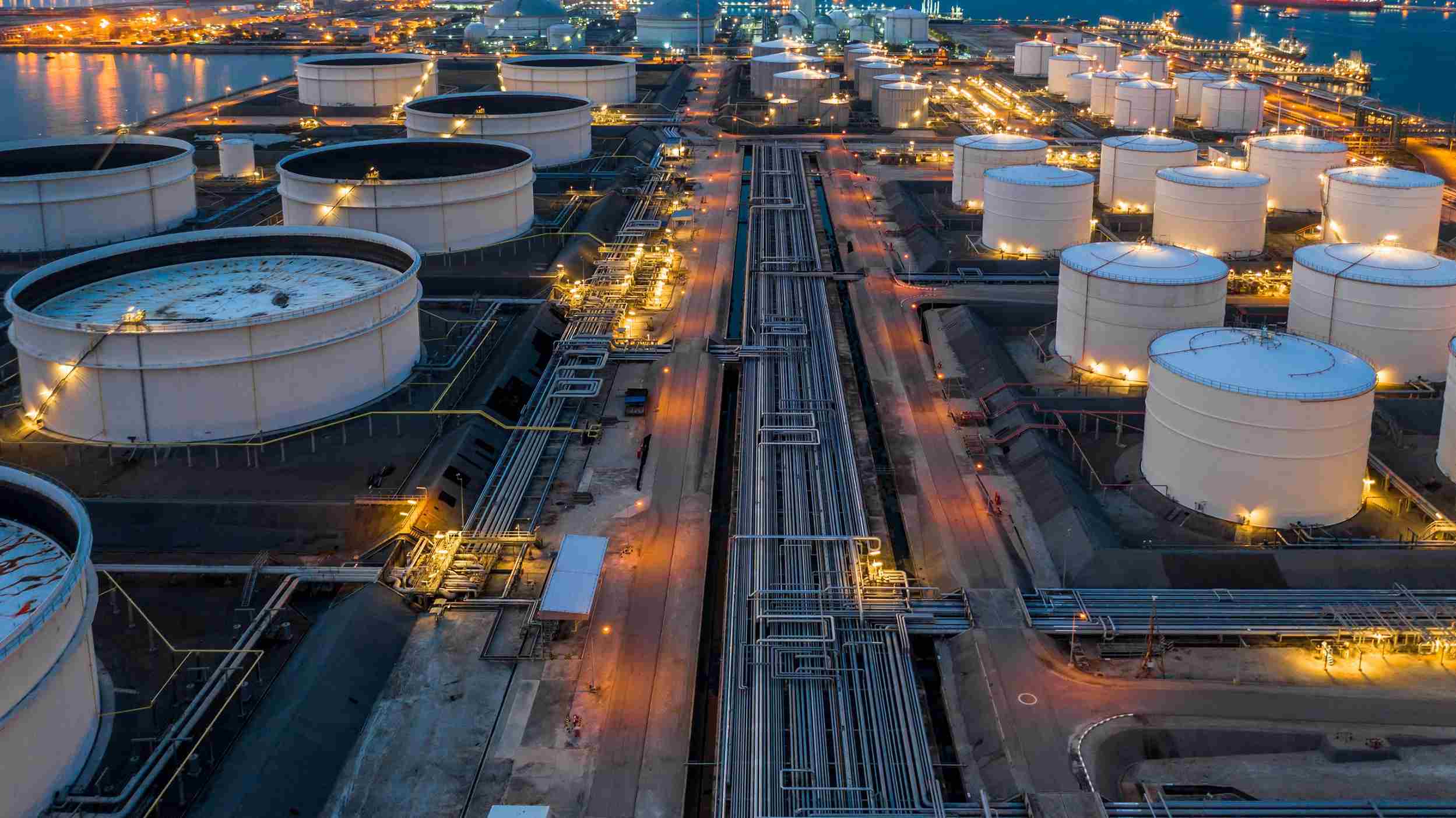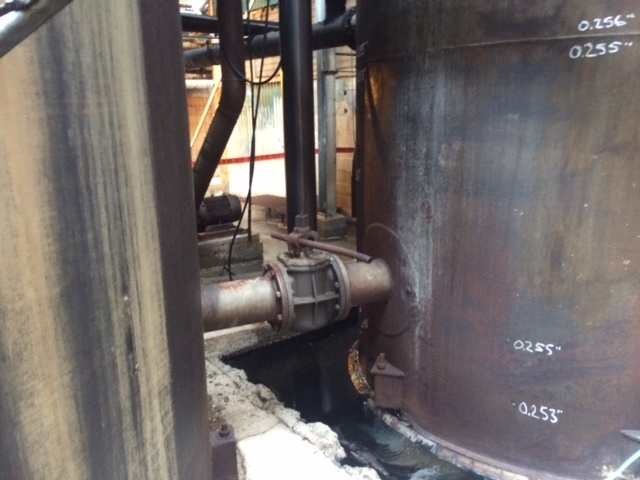All You Should Understand About API 650 Welding Inspection Guidelines
A Step-by-Step Take A Look At the Setup Refine of Welding Assessment Techniques
Welding assessment is an essential process that assures structural honesty and security. The setup of evaluation strategies entails several systematic actions, each integral to attaining reliable results. From planning and device option to conducting visual and non-destructive tests, each phase demands cautious attention. Comprehending these procedures can significantly boost quality control in welding tasks. What obstacles occur in applying these strategies, and how can they be properly attended to?
Recognizing the Significance of Welding Evaluation
Welding inspection is an essential component of ensuring architectural honesty and safety in building and manufacturing procedures. This technique includes reviewing bonded joints for problems, making certain that they meet details requirements and guidelines. By methodically gauging weld top quality, assessors can determine problems such as fractures, voids, and insufficient blend, which can endanger the toughness and longevity of structures.
The importance of welding assessment extends beyond instant safety concerns; it assists stop costly failings and potential threats in the lengthy term. Effective evaluation methods foster conformity with industry requirements, thus boosting the total integrity of bonded elements. Additionally, a durable evaluation process contributes to preserving the track record of contractors and makers, as it guarantees clients of the quality of their tasks. Inevitably, recognizing the relevance of welding inspection is essential for promoting risk-free construction methods and making certain the durability of essential infrastructure and items.
Picking the Right Tools for Inspection
When selecting the proper devices for inspection, it is important to consider the specific needs of the welding procedure and the products involved. Different assessment methods, such as aesthetic, ultrasonic, and radiographic screening, necessitate unique tools customized to their unique demands. For aesthetic inspections, tools like amplifying calipers and glasses are vital for reviewing weld quality. Ultrasonic testing requires specific tools qualified of transmitting and getting audio waves to find internal problems. Radiographic screening, on the other hand, utilizes X-ray or gamma-ray sources along with sensitive film or digital detectors to expose incongruities.
Additionally, personal protective equipment (PPE) is important to guarantee the safety of inspectors during assessments. Selecting the right tools not only enhances the accuracy of inspections however additionally adds to the total honesty and safety and security of the welding job. Subsequently, a comprehensive understanding of offered tools and their applications is necessary for effective welding inspection.
Planning for the Evaluation Refine
Prior to initiating the inspection procedure, it is vital to establish an extensive strategy that describes the scope and purposes of the examination. This strategy must include specific standards that define what makes up acceptable quality in the welding job being examined. Recognizing the pertinent codes and standards is crucial, as they will certainly guide the inspection criteria and methodologies.
Additionally, personnel associated with the evaluation has to be appropriately educated and licensed in welding inspection methods to assure reliability and precision. A list can be advantageous in arranging the different aspects of the examination, ranging from equipment preparedness to ecological conditions that might influence the evaluation.

Finally, logistical considerations such as scheduling, readily available sources, and communication in between staff member should be addressed. By preparing methodically, examiners can improve the efficiency of the evaluation and make certain that all vital variables are duly considered prior to proceeding with the assessment itself.
Conducting Aesthetic Assessments

Carrying out aesthetic assessments is a crucial step in the welding assessment procedure, calling for careful prep work to guarantee efficient examination. Inspectors have to know with key problem signs that can signal potential concerns in weld high quality. By concentrating on these elements, one can enhance the total reliability of the assessment results.
Planning For Visual Examination
Visual inspection serves as a critical very first step in the welding examination process, assuring that any kind of possible flaws are determined early (API 650 Welding Inspection). Appropriate preparation is important for effective aesthetic inspection. Assessors should start by assessing appropriate paperwork, including welding treatments and specifications, to comprehend the project requirements. They should collect needed tools, such as amplifying glasses, flashlights, and suitable individual protective equipment (PPE) An extensive examination of the assessment location is important; examiners ought to confirm it is complimentary and tidy of blockages. Additionally, it is essential to establish optimal illumination problems to enhance presence of welds. By taking these preparatory actions, assessors can develop an environment helpful to determining disparities and guaranteeing the integrity of the bonded structures
Key Problem Indicators
A complete understanding of crucial flaw indicators is vital throughout aesthetic assessments to guarantee the quality and safety of bonded joints. Examiners ought to concentrate on certain indications such as fractures, porosity, damages, and incomplete combination. Fractures may show up as sharp lines and can compromise architectural honesty. Porosity manifests as little holes that can damage weld strength. Undercuts, which are grooves this hyperlink along the weld edge, can bring about stress concentration. Insufficient fusion shows that the weld steel did not properly bond with the base material, leading to a weak joint. By methodically recognizing these issues, examiners can establish conformity with market requirements and enhance the total reliability of bonded structures, ultimately adding to much safer functional conditions.
Executing Non-Destructive Testing Strategies

Countless non-destructive screening (NDT) techniques are essential to ensuring the stability of welded structures without compromising their functionality. These methods permit inspectors to evaluate weld quality and find problems without creating damage to the products being checked. Common NDT strategies include ultrasonic screening, radiographic screening, magnetic bit screening, and dye penetrant testing. Each technique serves a certain objective, resolving various sorts of flaws such as splits, porosity, or incomplete blend.
Executing NDT methods needs a methodical approach, beginning with choosing the ideal approach based upon the products and the nature of the weld. Educating employees in these techniques is essential for accurate results. In addition, establishing clear treatments and requirements assurances uniformity throughout the evaluation process. By integrating NDT into the welding evaluation operations, companies can enhance the reliability of their items while minimizing prospective threats related to structural failures. This aggressive strategy ultimately adds to maintaining safety and top quality requirements in welded building and constructions.
Recording and Evaluating Assessment Outcomes
Effective documents and analysis of inspection outcomes are crucial components of the welding inspection procedure. Exact documents of examination searchings for work as a reference for quality control and conformity with sector requirements. API 650 Welding Inspection. Assessors ought to make use of structured forms or electronic platforms to log details such as the sort of weld, inspection methods used, and any disparities determined throughout the evaluation
Once information is accumulated, detailed analysis is vital. This includes comparing outcomes versus developed requirements to identify patterns or recurring concerns. Statistical tools may be utilized to quantify problems and assess their effect on overall weld high This Site quality.
In addition, efficient communication of searchings for to relevant stakeholders is critical. Records and summaries should be succinct and clear, highlighting crucial insights and recommendations for rehabilitative activities. By systematically documenting and evaluating evaluation outcomes, organizations can promote constant renovation in welding techniques and boost product integrity.
Regularly Asked Concerns
What Credentials Are Required to End Up Being a Welding Assessor?
To come to be a welding examiner, one typically needs appropriate qualifications such as AWS CWI, in addition to experience in welding methods, expertise of welding codes, and effectiveness in examination methods to guarantee quality and safety requirements.
Exactly How Commonly Should Welding Inspections Be Carried Out?
Welding assessments need to be conducted frequently, generally after each weld is finished, and regularly during projects. Variables such as task complexity, sector standards, and regulatory demands can influence the frequency of these evaluations.
What Is the Cost of Welding Examination Providers?
The price of welding inspection services differs considerably based on aspects such as job complexity, dimension, and location. Generally, rates vary from $100 to $150 per hour, with extra costs for specialized testing and certifications.
Are There Certifications for Welding Inspectors?
Yes, there are numerous accreditations for welding assessors, including those used by the American Welding Culture (AWS) and the International Institute of Welding (IIW) These accreditations assure examiners possess the essential abilities and expertise for efficient analyses.

Exactly how Do I Choose an Examination Solution Supplier?
To choose an assessment provider, one need to assess credentials, experience, industry credibility, and client evaluations. Your Domain Name Additionally, contrasting solution offerings and rates can assist guarantee the chosen provider meets certain project requires effectively.
In addition, employees entailed in the inspection should be adequately educated and accredited in welding assessment methods to guarantee dependability and precision. Conducting aesthetic assessments is a necessary step in the welding examination process, needing mindful prep work to guarantee reliable analysis. Visual evaluation serves as an important initial action in the welding examination process, assuring that any kind of potential issues are identified early. Effective documentation and evaluation of inspection outcomes are vital components of the welding evaluation procedure. Welding examinations ought to be performed on a regular basis, commonly after each weld is finished, and periodically throughout tasks.